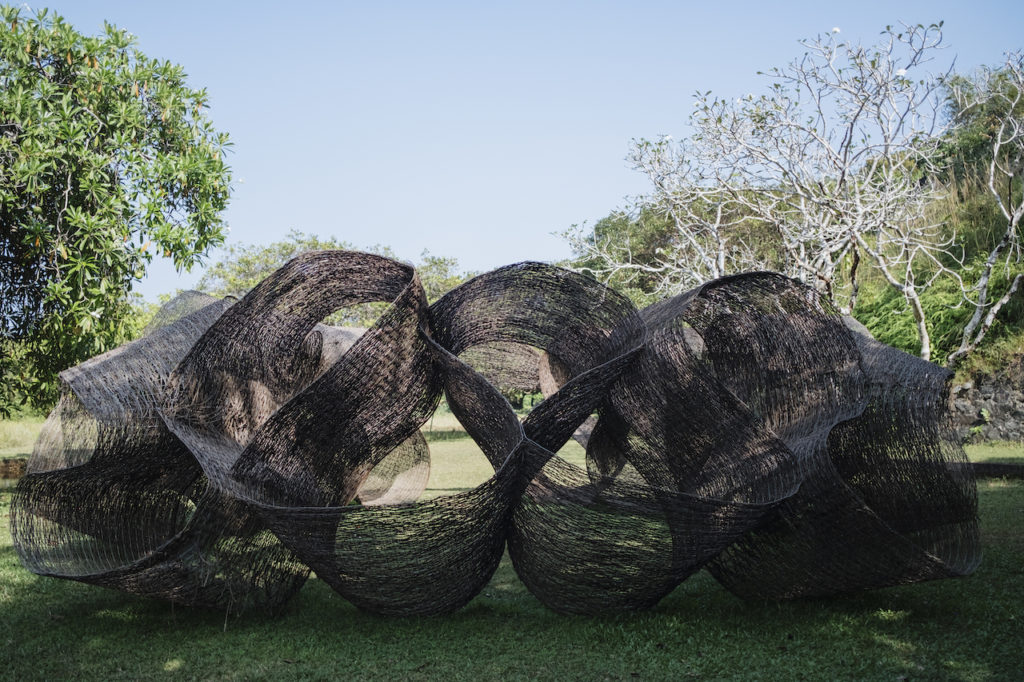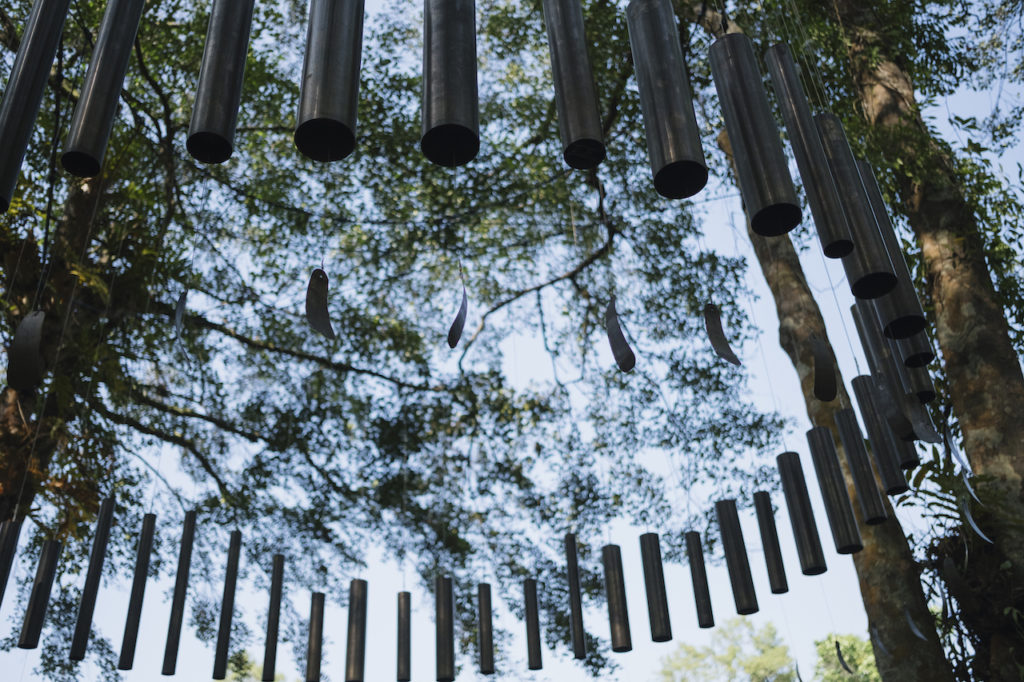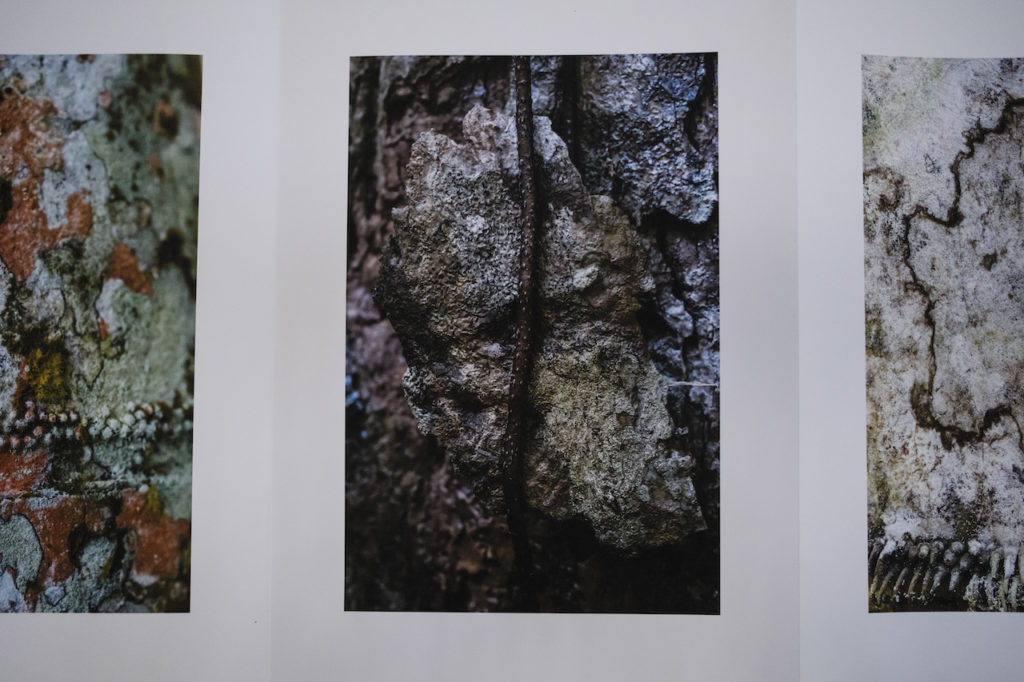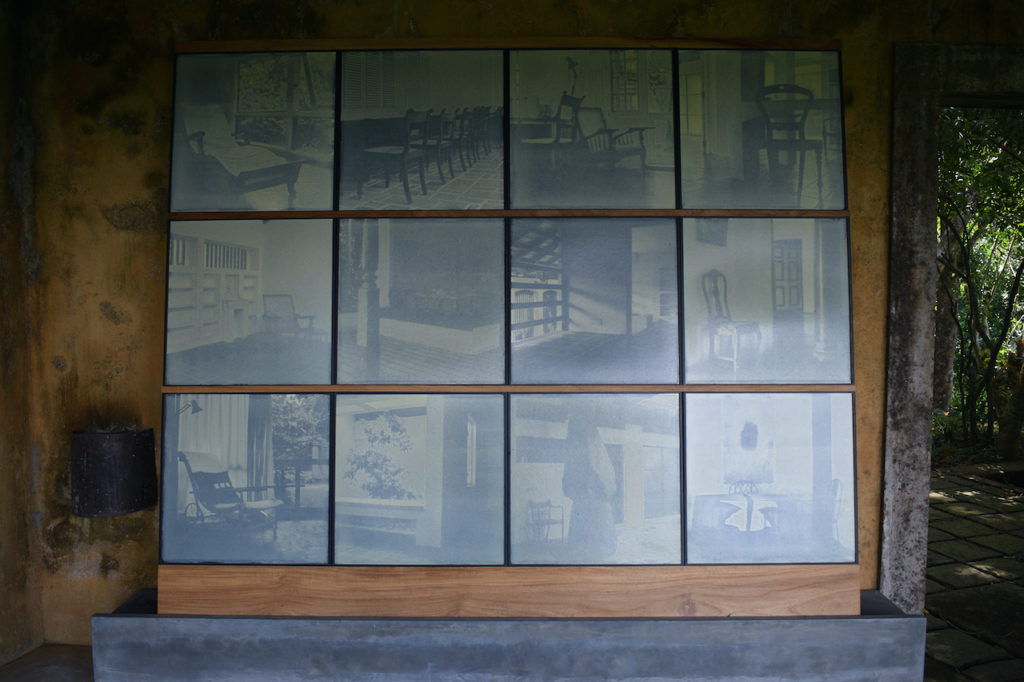A Brief Colonial History Of Ceylon(SriLanka)
Sri Lanka: One Island Two Nations
A Brief Colonial History Of Ceylon(SriLanka)
Sri Lanka: One Island Two Nations
(Full Story)
Search This Blog
Back to 500BC.
==========================
Thiranjala Weerasinghe sj.- One Island Two Nations
?????????????????????????????????????????????????Saturday, September 4, 2021
The Gift: Five Installations at Lunuganga
Photos courtesy of Geoffrey Bawa Trust
SHAYARI DE SILVA-09/01/2021
In his acclaimed book on the subject of gifts, Lewis Hyde remarks “When we are moved by art we are grateful that the artist lived, grateful that he labored in the service of his gifts. If a work of art is the emanation of its maker’s gift and if it is received by its audience as a gift, then is it, too, a gift?” These questions are key to how we perceive Lunuganga and how we continue to engage with it today. Hyde also speaks of gifts as agents of change, and we look to the garden which is both ever-changing and ever-constant as we reflect on the concepts of time and change within the context of contemporary art and architecture practices.
Lunuganga was created by Geoffrey Bawa over a period of forty years and is considered to be a seminal expression of his practice, a place where much of Bawa’s architectural thinking was explored and expressed through a series of built structures and the creation of a garden. Throughout his life, Bawa invited artists including Laki Senananyake, Lidia Duchini, Fiona Hall, Jimmy Ong and Michael Ondaatje to make work on site or be inspired by it. Lunuganga has been and continues to be a quiet source of generosity for those interested to draw from this gift.
In 2019, as part of the artistic programme commemorating Geoffrey Bawa’s 100th birthday, Lunuganga reconnected with this energy to host a series of installations by artists and makers from Sri Lanka and abroad, in a series where the garden was explored as a site of hospitality and a place of encounter. The artists invited for this project were Kengo Kuma, Lee Mingwei, Chandragupta Thenuwara, Dayanita Singh and Dominic Sansoni.
Each artist responded to Bawa’s practice and his garden through a unique, site-specific work. Three months prior to the launch of the Bawa 100 programme, in April 2019, Sri Lanka was devastated by the Easter Sunday attacks. At the time, having reflected on the what occured, the Bawa Trust took the position that in the spirit of bringing communities together in the face of bereavement, the essential programming of the events honouring Bawa’s 100th birth anniversary would continue. The Trust was committed to nurturing the unity and hope engendered by artistic endeavours. All the artists and makers connected with the programme echoed this commitment and persevered with renewed purpose.
Of course, no one could have anticipated that less than a year later, when The Gift was launched in January 2020 as part of Bawa 100, it would be at the cusp of a global pandemic and that these works would endure a time of unprecedented uncertainty, offering pause for reflection on the meanings of generosity and intimacy.
In terms of producing and sharing art within the context of architecture; The Gift presented us with a unique opportunity. As with any gift-giving process, good will and good faith were key drivers in the collaboration between the artists and curatorial team. The process and timelines were fluid, resulting in works that took up to two years of exploration, experimentation and fabricationand establishing friendships and collaborations that were gifts in themselves.
By using the history and context of the garden as a starting point, The Gift was an opportunity to experiment; operating outside of the commercial realm of art, the programme navigated away from the pressures and brevity of the biennales and festivals and. These cyclical forums form a core component of the public art experience globally and in Sri Lanka especially, where the institutional experience of art and design is incredibly limited. Fundamental to each of the five installations is the idea of place; these works were all made in Sri Lanka (barring only the printing of Dayanita’s photographs, which was done in India). This was made necessary by the impositions of budget and the absence of an art-transportation infrastructure in Sri Lanka. Ironically, these same restrictions were faced by Bawa during much of his practice, especially during Sri Lanka’s closed economy years; a time in which the firm worked with tremendous ingenuity collaborating with many key designers and makers in the island to source materials and make objects locally.
The idea that a work of art is made for a place, to be experienced within a very specific context, is one that can be traced through much of Sri Lanka’s art historical lineage be it in the cave temples of Dambulla or the murals of David Paynter or many of the sculptures of Laki Senanayake. This symbiosis between art and architecture deserves to be underscored in our contemporary understandings of both disciplines; that a work of art can help us perceive space anew, and that the location and the physical context of an artwork influences how we approach the work itself.
When working on The Gift each artist had to contend with Lunuganga in terms of its beauty, its carefully controlled entropy, as well as its intrepid squirrels, formidable monsoons and relentless humidity in specific ways. Their ingenious solutions to these challenges and the acceptance that some aspects of these works, like the kithul flower strands that are woven together to form Kengo Kuma’s pavilion, will decay with time, are also important. They remind us that experiences can be fleeting and this is a defining aspect of encountering these works – no two visits are the same.
The Installations
Photographs courtesy of Ruvin de Silva © The Lunuganga Trust
Kithul-Ami by Kengo Kuma (lives and works in Tokyo). Kithul-flower weave over galvanized iron mesh support.
Kengo Kuma’s practice has been characterized by a commitment to using traditional materials and crafts in innovative forms and techniques. Pavilions have also played an essential role in processes of experimentation and development of ideas, in Kuma’s architecture practice as within the discipline. For this work at Lunuganga, Kuma drew inspiration from the outdoor furniture Bawa designed for Kandalama, a few of which are scattered across the garden, and the local kithul craft, where strands from the kithul flower are dried and woven into household objects. Working with a team shepherded by Disna Shiromali, a weaver based in Galle, and Indika Kumarasingha, a metalsmith based in Bentota, the pavilion was designed to offer a brief moment of repose and reflection through the framing of views. The pavilion can also be used for tea ceremonies and similar gatherings.
Zephyrus’ Breath by Lee Mingwei (lives and works between Paris and New York). 50 Pre-cast brass bells with timber clappers; stainless steel and nylon suspension Laterite stone base in timber framework.
Lee Mingwei creates participatory works which explore issues of trust and intimacy often through the lens of time and chance. Mingwei’s installation at Lunuganga draws from a tripartite work titled Trilogy of Sounds done in 2010 for Mount Stuart in the Isle of Bute, Scotland. In bringing the bells to Sri Lanka, several subtle adjustments were made by the artist to adapt to the local context. Here, they are made of three dimensions of locally available pre-cast brass tubes, suggesting a timbre akin to the temple bells of the island. Bawa himself used fourteen different bells throughout Lunuganga – each bell having a distinct register which helped identify his location in the garden. This work, titled Zephyrus’ Breath, reveals the sensitivity to place and encounter which characterizes much of Mingwei’s work, offering an experience that is unique to each visitor.
Symbiotic Organisms by Dominic Sansoni (lives and works in Sri Lanka). Inkjet prints on archival paper (2020) Digitized contact sheets on photographic paper (1977) Prints on photographic paper (1989) Inkjet print on archival paper (2019).
Dominic Sansoni has been photographing Lunuganga since 1977. Perhaps the most well-known of these images are the ones which he took along with Christoph Bon, in black and white, for Bawa’s own publication Lunuganga in 1989. For his work in The Gift, Dominic took a very close look at the garden, showing the garden at a scale that is rarely observed. This “garden within a larger garden” which Dominic has photographed reflects many of the themes that have characterized his practice over the years; an interest in chroma, or the qualities of colour, landscapes and things observed as they are naturally found to be. Viewed together, the photographs in this installation show Dominic’s acute observations of the changing and unchanging elements in the garden and the relationships that he has documented over the years.
Lunuganga Chairs by Dayanita Singh (lives and works in New Delhi). Enamel paint on inkjet paper (2017–2020).
Dayanita Singh uses photography to reflect on spaces and experiences; often capturing the ephemeral, transcendent qualities inherent in architecture. Her images are intended to be encountered through fluid sequences and are housed in architecture designed by the artist to encourage the viewer to engage keenly; subtle changes over time may be observed by the astute viewer. Her work for The Gift follows an extensive body of work on Bawa. With this installation, the artist states, “Somehow – alongside my interest in architectural structures, came the clarity about the limitations of the photographic print. Box 507 emerged precisely because the photographs revealed too much and not enough at the same time. As though a photograph could not get to the essence of what I experienced in the sublime Kandalama. Similarly, when I printed the Lunuganga Chairs – they seemed almost vulgar in how much detail they revealed. There was too much information – and then, by chance, the painting started. I no longer wanted the dark blacks or the highlights – just if I stayed in the mid tones, maybe something more would reveal itself. Perhaps closer to my experience of the place.”
Beautification II by Chandragupta Thenuwara (Lives and works in Colombo). Stoneware with cobalt pigment under transparent glaze.
Chandragupta Thenuwara’s practice as an artist is deeply intertwined with the politics of Sri Lanka. Formally trained in painting, Thenuwara works in a range of media and uses intricate details tinged with dry humour to critique the ever-unfolding political landscape of the island. Thenuwara’s work at Lunuganga once more picks up the theme of Beautification, the subject of his solo exhibition in Colombo in 2013, which addressed the then-government’s urban gentrification programme through the guise of ‘Beautification.’ In this new work, Thenuwara engages with the garden through the existing natural and man-made elements and Bawa’s own practice of using systems of grids and axes to ground his work, which then negotiates the extant natural landscape. Beautification, too?






